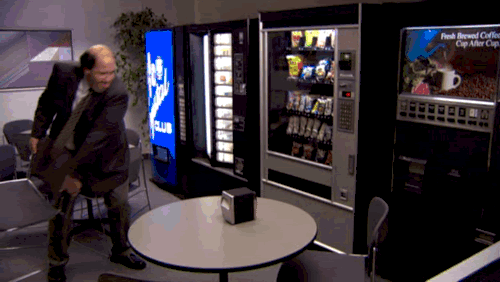 We often talk about bacteria hot spots. These are places that harbor bacteria and the environment and conditions surrounding them cause bacteria to multiply quickly. A good example of a bacteria hot spot is a kitchen sponge that gets touched often with hands and comes into contact with various foods. Additionally the moisture makes it the perfect breeding ground for bacteria. Other times hot spots are places that are touched frequently and often times by many people, but are rarely (if ever) cleaned. The reason your smart phone has more germs than an average toilet seat is because toilet seats are cleaned much more often. Office objects like phones, keyboards and pens are easily forgotten or not included in a cleaning routine. Objects in a communal space get overlooked most often because people aren’t sure whose responsibility it is to clean them. This leads to bacteria being spread most often through things we use every day. Here are the germiest places in any office. Desks – Workspace or Germspace?Office Phone On average, an office phone can harbor about 25,000 germs per square inch according to research done by the University of Arizona. It gets coated in bacteria from our mouth and hands, and should be wiped down daily with a sanitizing wipe.
Pens Especially shared pens. Surface germs can last for up to 72 hours. While it’s probably unreasonable to disinfect all the pens in your office, you can avoid sharing them and touching them to your face or mouth. Buttons! Buttons Everywhere!Elevator Buttons Ever seen someone use their elbow to hit their floor or cover their hand with their sleeve? You may think it’s strange but it’s not such a bad idea! You have multiple people touching those buttons every day & how often do they get cleaned? Vending Machines Fingers, money & food – the perfect storm for harboring potential pathogens. This machine should be part of your regular cleaning routine. You can also put hand sanitizer in the breakroom or wherever they’re located to encourage workers to use it after they get their snack and before they eat it. Fax Machines, Copiers & Printers Used daily by multiple people, but when’s the last time you’ve seen those cleaned? Another great spot to put hand sanitizer, and should be included in the cleaning routing. Breakrooms & Food Areas The Watercooler Specifically the spout. Sometimes people using water bottle or cups touch it directly causing germs to be transferred from their cup to the spout & vice versa. To stay green by reducing your use of plastic bottles, you can disinfect the spouts once a week by soaking them in a diluted bleach solution and rinsing well. Handles on Faucets, Microwaves, Coffee Pots & Refrigerators Just like door handles, these should be cleaned daily as part of the cleaning routine. Whenever there is food around, there is the potential for foodborne illnesses. Wash your hands for 20 seconds immediately before and after preparing food and eating it. Keeping hand sanitizer in the breakroom as an alternative is also helpful. Shared Mugs & the Sponges that “Clean” Them A study from University of Arizona microbiologist Charles Gerba found that 20% of “clean” office cups had traces of coliform bacteria (fecal matter). Once the cups were wiped down with a communal dishcloth or sponge, the number jumped up to 100%, and 20% then tested positive for E. coli. We’d recommend people using their own utensils and cups from home if your office doesn't have a dishwasher. Just because it’s there, doesn’t mean you have to get sick!Proper handwashing is your number one defense! There will always be germs everywhere we go. Washing your hands frequently and avoiding touching your hands to your mouth and face are great ways to prevent illness for you and those around you! According to the Center for Disease Control (CDC), handwashing with soap can reduce respiratory illnesses by more than 20% and diarrheal illnesses by up to 58%. We don’t mean getting your hands wet for 5 seconds and then wiping them dry on your shirt either. Sorry guys, we’re looking at you… An in-depth 2013 study by Michigan State University observed the hand-washing practices of 3,749 people and men’s handwashing habits were much worse:
How do you properly wash your hands? Start: rinse your hands of any dirt or grease before adding soap. Scrub: apply soap and rub hands together making sure to get every area of your hands and any exposed areas of your wrists. According to the CDC, most people forget about their fingertips and between their fingers. Time: hum the tune of “Happy Birthday” twice in your head to ensure you are washing for the proper amount of time- at least 20 seconds. Rinse: rinse off all the soap Dry: a very important step to removing germs! Finish: avoid recontamination. If possible, use a paper towel to turn off the faucet and when touching the door handle to leave the restroom. Remember all those people who don’t wash their hands properly and are touching these areas with contaminated hands. When you can’t wash your hands, hand sanitizer with at least 60% alcohol is a good alternative. Have any questions? Drop us a comment!
1 Comment
7/27/2019 06:45:30 pm
Here’s one we rarely think of how many times do we go to the restroom and when we leave we grab a paper towel to open the door that’s very common practice these days. But what about the chair when you go back to your table to pull out and sit down again? It’s a haven for bacteria!
Reply
Your comment will be posted after it is approved.
Leave a Reply. |
Archives
April 2020
Categories
All
|
- Home
-
Products
- Aerosols
- Air & Surface Purification Technology
- Closed Loop
- Carpet Care
- COVID-19
- Degreasers
- Deodorizers
- Dietary/Kitchen
- Dishmachine Programs
- Disinfectants
- Floor Equipment
- Floor Cleaners
- Floor Care
- Floor Care - Gym
- Hand & Body Wash
- Janitorial
- Laundry
- Multi-Purpose
- Restroom Care
- Specialty
- Window Cleaners
- Resources
- Contact Us
- Blog
- Home
-
Products
- Aerosols
- Air & Surface Purification Technology
- Closed Loop
- Carpet Care
- COVID-19
- Degreasers
- Deodorizers
- Dietary/Kitchen
- Dishmachine Programs
- Disinfectants
- Floor Equipment
- Floor Cleaners
- Floor Care
- Floor Care - Gym
- Hand & Body Wash
- Janitorial
- Laundry
- Multi-Purpose
- Restroom Care
- Specialty
- Window Cleaners
- Resources
- Contact Us
- Blog
Actual product appearance may vary slightly from pictured item.






 RSS Feed
RSS Feed